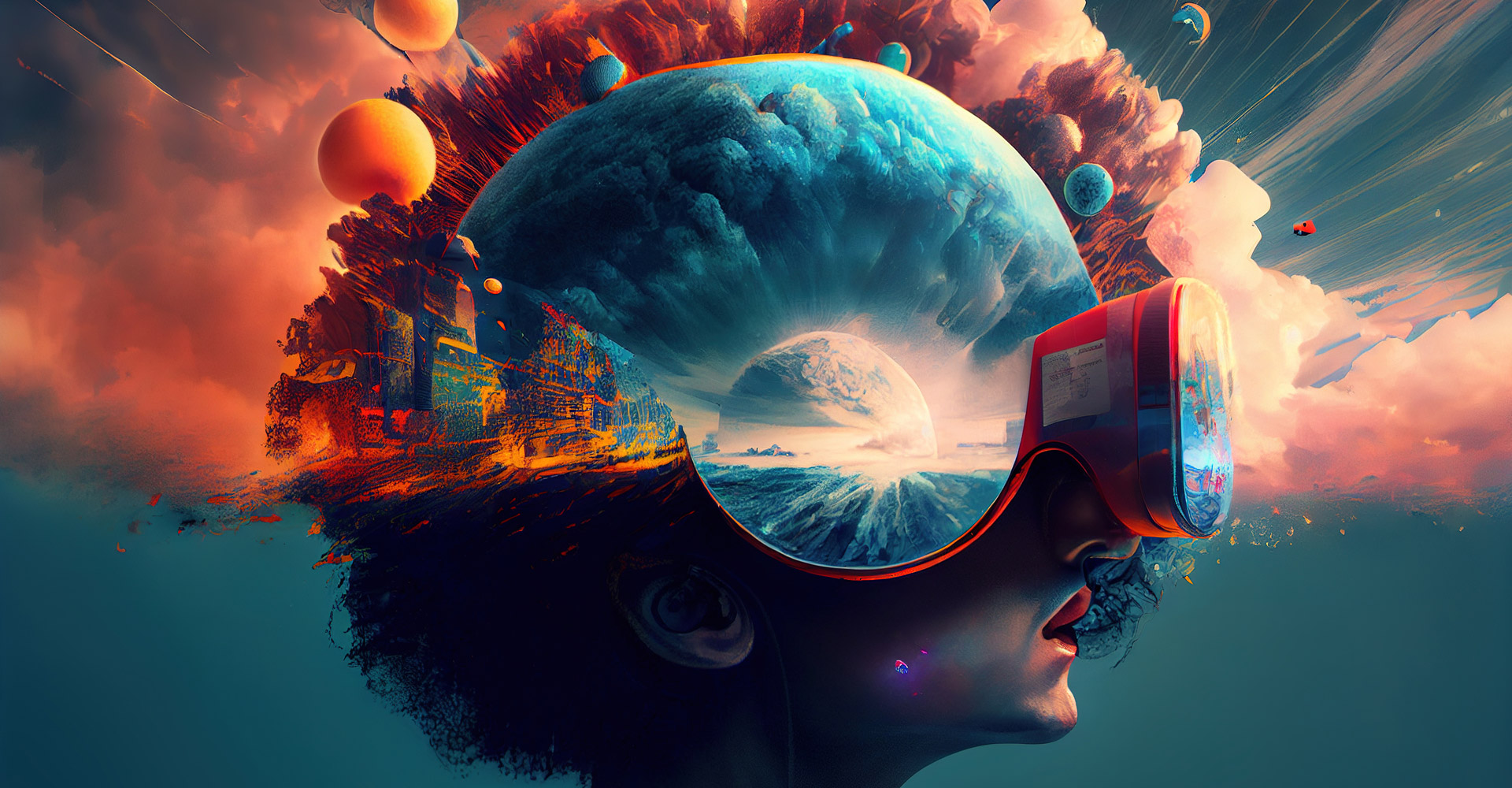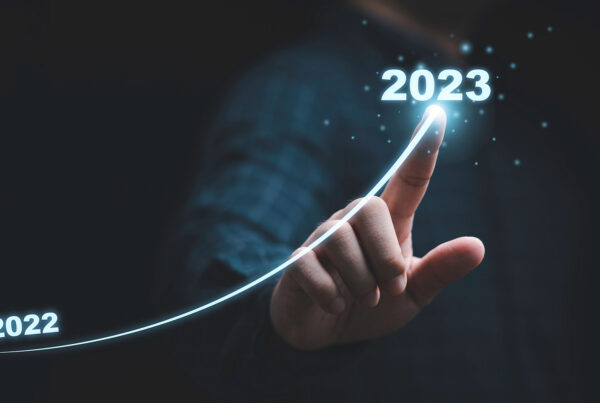Humans and AI Working Together: Taking the Best of Both Worlds
November 8, 2022

AI is everywhere, from our phones to our cars to our homes. But it’s not just a tool for convenience; it has the potential to revolutionize the way we work. From automation to advanced analytics, AI can help businesses improve efficiencies and tap into new opportunities.
But that doesn’t mean that humans should be replaced; in fact, humans and AI working together can be even more powerful than either one alone.
Let’s explore some of the benefits of this collaboration.
What is Human-Centered Design?
Human-centered design (HCD) is a process that focuses on people first when designing products or services. HCD uses an iterative approach to build a deeper understanding of users’ needs, wants, goals, skills, capabilities, motivations, and limitations—all with an eye toward creating solutions that make their lives easier. This approach helps bridge the gap between humans and technology by ensuring that any product or service created takes into account user experience and usability.
How Does AI Fit In With Human-Centered Design?
AI can complement human-centered design by providing additional insights into how people interact with products or services. By combining the data collected from HCD methods with machine learning algorithms, companies can create personalized experiences tailored to individual user needs.
For example, a company might use AI to identify patterns in customer behavior and then create targeted marketing campaigns based on those patterns. This type of automation reduces manual efforts while also providing more accurate results than traditional methods alone would offer.
The Benefits Of Human-Centered Design
The main benefit of HCD is that it allows businesses to develop products, services, and experiences tailored to their users’ specific needs. As a result, these products are much more likely to be successful in the long run since they have been designed with customer satisfaction in mind. While traditional design processes focus purely on aesthetics, human-centered design takes this one step further by considering how different elements interact from a user perspective. This helps designers to create an experience that is intuitive and easy to understand for its users.
In addition to improving user experiences, HCD also has many benefits for businesses themselves. One such use is improved customer loyalty; when customers feel like their needs are being taken into account during product development, they will likely stay loyal to a particular brand or company over time. Furthermore, by taking customer feedback into consideration early on during product development, businesses can save time and money in the long run since they can identify any potential issues before they launch their product or service.
Another significant advantage of human-centered design is its ability to help organizations better understand their target audiences. By studying user behavior and preferences through research methods such as surveys and interviews, companies can gain valuable insights about what kind of products and services would best suit their customers’ needs — insights that would otherwise remain unknown if not for HCD. Marketers can then use such insights to craft more effective campaigns that resonate with potential customers more effectively than traditional marketing tactics.
What Is Human-AI Coordination?
As companies incorporate more automation into their processes, humans need to learn how to work alongside machines instead of competing against them; this is referred to as “human-AI coordination.”
In other words, instead of allowing machines to take over all manual tasks—which would lead to job losses—humans should learn how to collaborate with machines so everyone works more efficiently together. This could involve automating mundane tasks such as data entry while leaving decision-making tasks like strategy formulation up to people; in this way, both humans and machines can coexist peacefully in the workplace.
The Benefits Of Human-AI Coordination
There are numerous benefits associated with combining human creativity with AI capabilities. For starters, humans can bring their unique experiences, knowledge, ideas, and intuitions to bear on complex problems or projects requiring creative thinking or decision-making.
Meanwhile, AI algorithms are adept at quickly processing large amounts of data and identifying patterns or trends that humans might otherwise overlook. This combination can result in faster problem-solving and superior outcomes compared to humans or machines working alone.
Another benefit is that AI-powered automated processes can free up time for business professionals to focus on higher-value activities such as developing strategies or working on innovative projects. Additionally, when combined with an effective user interface, these automated processes can help reduce errors while increasing efficiency across multiple departments within an organization. This makes them invaluable tools for any business looking to streamline operations while maximizing ROI.
Artificial Intelligence (AI) has been making waves in the tech industry for some time now, and it’s no surprise why.
Challenges With Human-AI Interaction
Although there are numerous advantages to human-AI coordination, there are also some potential challenges that organizations need to be aware of. Businesses must ensure that their AI algorithms are reliable, accurate, and trustworthy; otherwise, any decisions or processes relying on them could be compromised.
Businesses need to select an appropriate user interface for interacting with their AI-powered systems. If the user experience is not intuitive and easy to understand, users may become frustrated with the system or could make incorrect decisions based on its outputs.
Aside from technical challenges, there are also challenges with AI and humans working together in the workplace. Here are some of the most common issues:
Uncertainty and Complexity of Human Intentions
One of the most difficult challenges faced by AI developers is coding a system that can understand the complexity and uncertainty of human intentions. Humans often use language that is open to interpretation, so AI needs to be able to interpret nuances in language and be able to provide an appropriately tailored response. Additionally, human intention is often not explicitly stated, so AI must be able to infer intention based on context clues. This requires developers to code a highly sophisticated level of understanding into their AI systems.
Context Dependency and Ambiguity
Another challenge when developing AI for human interaction is programming an artificial intelligence that can accurately interpret context dependency and ambiguity in communication. For example, if someone says, “I know what I need for dinner,” it could either mean they know what ingredients they need or know which restaurant they want to order from. It is easier for an AI system to be able to interpret ambiguous statements with additional information or clarification from the user.
Learning and Adapting
The final challenge associated with developing effective human-AI interactions lies in teaching the machine how to learn from its experiences with users to adapt its responses over time. Machines must learn quickly and efficiently in order to keep up with changes in language usage as well as changes in user behavior over time. For this reason, machines should have access to large datasets gathered from customer interactions so they can continue learning over time—and responding more effectively—as customer needs evolve.
Harnessing Human Creativity in an AI Context
AI can also be used to enhance the creative process when crafting products or services for consumers. AI can be used to help generate ideas and possibilities for a business, as well as provide insights about customer preferences or needs that could lead to more successful product launches.
Here are the concepts to consider when attempting to harness human creativity in an AI context:
Natural Language Processing
One of the most effective ways in which AI can support creativity is through natural language processing (NLP) algorithms. By leveraging these algorithms, companies can generate ideas for innovative and practical product designs or features, essentially allowing machines to “think outside the box” just like humans do when trying to solve a problem. This technology has already been employed by numerous businesses looking to bring new product ideas to market, allowing them to brainstorm concepts quickly and efficiently while also ensuring that they remain on task and stay focused due to distractions.
Machine Learning Models
In addition to NLP algorithms, machine learning models can also be trained on large datasets to recognize consumer behavior trends so that companies have a better idea of which features will resonate with their target audience before they even launch them. This helps save time and money by ensuring that only the best ideas are put forward while simultaneously reducing the risk associated with launching a new product or service into an uncertain market.
Furthermore, combining machine learning models with NLP algorithms can allow companies to generate entirely new ideas based on real-world consumer data as well as predictive analytics—a powerful combination for any company looking for a competitive edge in today’s rapidly changing digital landscape.
Conclusion
Humans and AI working together have become increasingly popular as technology advances into new areas of development and implementation. With human-centered design combined with artificial intelligence algorithms, businesses are able to craft products or services suited specifically for their customers while also improving efficiency and productivity through automated processes such as machine learning models for analytics purposes or natural language processing for creative endeavors.
Ultimately, embracing this new concept allows organizations to capitalize on human creativity and machine capabilities to gain an edge over their competitors.
ABOUT MORANT MCLEOD
Our management consulting processes are a highly effective way for businesses to improve their organizational performance and achieve their goals. We offer expertise and specialized tools that can help organizations navigate the challenges involved in major changes.




